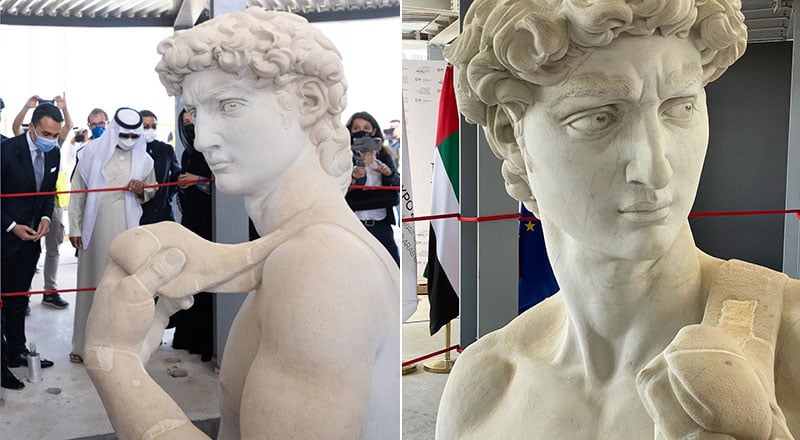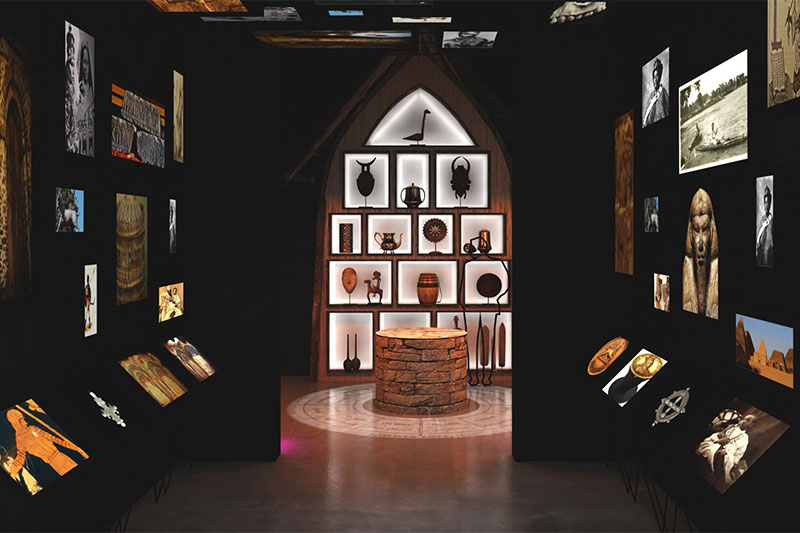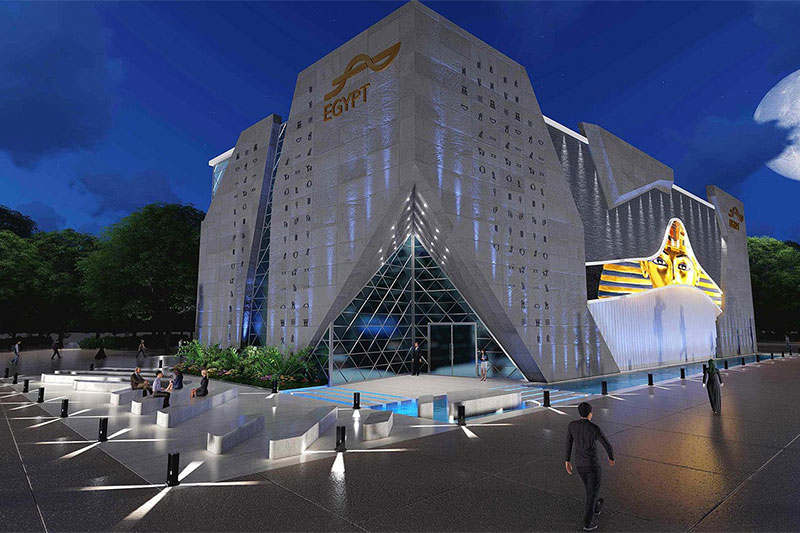Arts and culture: 5 spots we can't wait to visit at Expo 2020 Dubai
So much to see at Expo 2020 Dubai including fossils, replicas of famous statues and structures across the world, and if the paperwork falls through, an Egyptian mummy…
Expo 2020 Dubai is now less than 30 days away and of course, there are plenty of pavilions to visits which is why it’s good to start prepping up a list you can tick off. For you art lovers and culture vultures out there, hidden inside the jaw-dropping pavilions is a treasure trove of artefact, reproductions, structures and much more just waiting to be discovered.
Of course, this is just a roundup and the list will definitely grow as we come to learn more, but for now…
Here are 5 spots we can’t wait to visit at Expo 2020 Dubai.
3D printed replica of Michelangelo’s David

Where: Italy Pavilion
In March, we announced that a 3D printed statue of the world-renowned David by Michelangelo will be at Expo 2020 Dubai. After the printing process was done, the finishing touches were done by hand. The reproduction will be the most accurate and sophisticated reproduction of the sculptor’s masterpiece and since it’s an exact replica, the statue will be 17 feet tall. If you want some perspective, that’s nearly the height of a giraffe. Yep, that’s tall. A video displayed next to the statue will show you how the sculpture was created from start to finish.
Ugaritic alphabet
View this post on Instagram
Where: Syria Pavilion
The Syria Pavilion will be showcasing the world’s first alphabet at its pavilion at Expo 2020 Dubai. The identical replication of the Ugaritic alphabet dates back to nearly 1,400 BC. Visitors will also learn about the development of early writing systems and alphabets across Syria. There will also be an audiovisual interactive experience where guests can take part in singing and playing humankind’s oldest musical notation, which was written in Ugarit from over 3,500 years ago.
3.2 million-year-old ‘Lucy’

Where: Ethiopia Pavilion
The Ethiopian Pavilion at Expo 2020 Dubai will have a replica of the oldest human fossil ever discovered. The actual fossil is 3.2 million years old and is called Lucy. Locally, it is named ‘Dinknesh’ which translates to ‘ you are amazing’ in Amharic. It was found in Ethiopia in 1974 and rewrote the history of human evolution and earned the country the reputation of being the ‘cradle of humanity’. Visitors to the pavilion will begin their journey, just as humankind did, in a dimly lit cave before being taken through Ethiopia’s pre-historic history and finishing in a modern factory that underlines its manufacturing successes.
Pharaoh statues and hopefully, a mummy…

The Egypt Pavilion design is a steel structure bragging Hieroglyphy (character of the ancient Egyptian writing system). While these will be cool to see while gazing at the pavilion from the outside, there’s more to see on the inside. The Expo 2020 Dubai website states that the Egypt Pavilion will offer a 3D exprience for visitors where they can travel through a time machine and will also be showcasing three original antique Pharaoh statues. The walls, too will showcase reliefs (Egyptian wall art). Upon further research, we found out that the Egypt Pavilion is also trying to arrange for a real mummy to be flown in from Egypt. We are waiting for confirmation on this but if they manage to make it happen, this pavilion will shoot to the top of the list.
Mysterious watercraft
View this post on Instagram
You might also like
Where: Philippines Pavilion
The Philippines Pavilion will be one of the prettiest to visit at Expo 2020 Dubai. The design drew inspiration from bangkóta which means coral reef in the ancient Filipino language and represents the cultural journey of the Filipino people’s cultural journey from deep time to the present. There will be plenty to see that showcases their story including a mysterious watercraft created by multi-media artist Patrick Cabral. The watercraft depicts the 4,000-year movement of the Austronesian-speaking people from Northern Philippines to Polynesia and Madagascar which marked the beginning of oceanic travel for the human race.
Images: Social/Supplied
